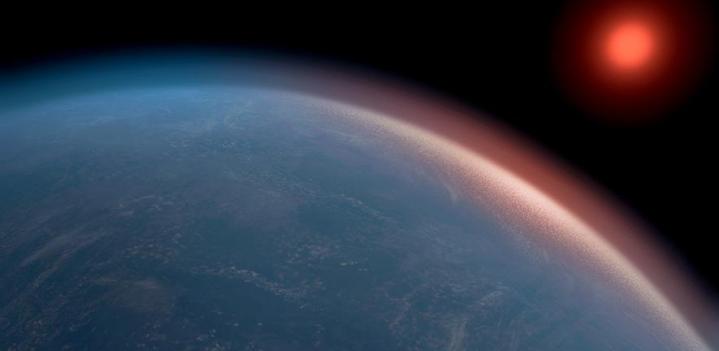
Astronomers have located a large potentially habitable exoplanet, more than twice the size of Earth.
The planet K2-18b is located 124 light-years away and orbits its star within the habitable zone in which it is possible for liquid water to exist on its surface. The planet is 2.6 times the radius of Earth and 8.6 times its mass, and previous research has found water vapor within its primarily hydrogen atmosphere.
“Water vapor has been detected in the atmospheres of a number of exoplanets but, even if the planet is in the habitable zone, that doesn’t necessarily mean there are habitable conditions on the surface,” Dr. Nikku Madhusudhan from the University of Cambridge’s Institute of Astronomy, leader of the team for this new research, said in a statement. “To establish the prospects for habitability, it is important to obtain a unified understanding of the interior and atmospheric conditions on the planet — in particular, whether liquid water can exist beneath the atmosphere.”
When the planet was investigated previously, researchers thought that is was more like Neptune than Earth, and that it would have a thick layer of hydrogen, called a hydrogen envelope, which would make its surface temperature and pressure too high to be habitable. The new research, however, looked at the composition and structure of the atmosphere and showed that even though the planet is large, its hydrogen layer is not necessarily that thick. They estimate that at most, the hydrogen envelope accounts for 6% of the mass of the planet.
“We wanted to know the thickness of the hydrogen envelope — how deep the hydrogen goes,” co-author Matthew Nixon, a Ph.D. student at the Institute of Astronomy said in the statement. “While this is a question with multiple solutions, we’ve shown that you don’t need much hydrogen to explain all the observations together.”
The findings indicate the possibility that this could be an ocean world, with surface temperature and pressure similar to Earth. The findings also indicate that the definition of habitable planets could be expanded, as even larger worlds like K2-18b could be habitable under certain conditions. The team suggests that it could search for more similar potentially habitable planets using tools like the upcoming James Webb Space Telescope.



